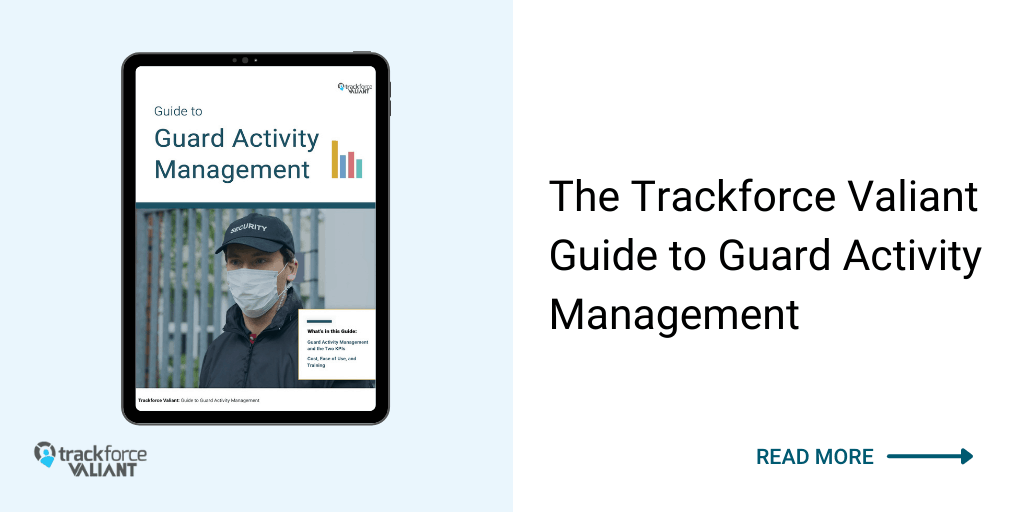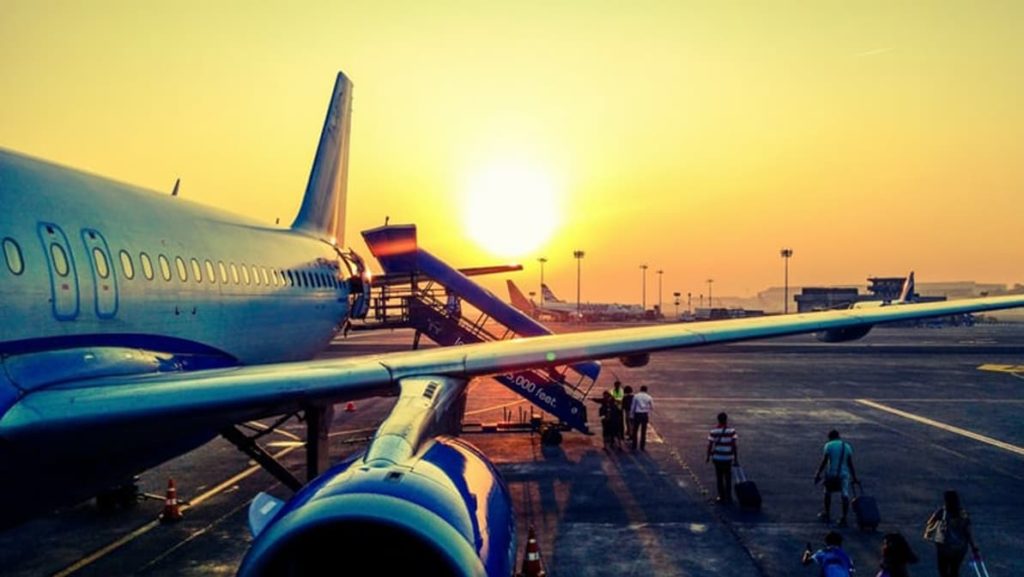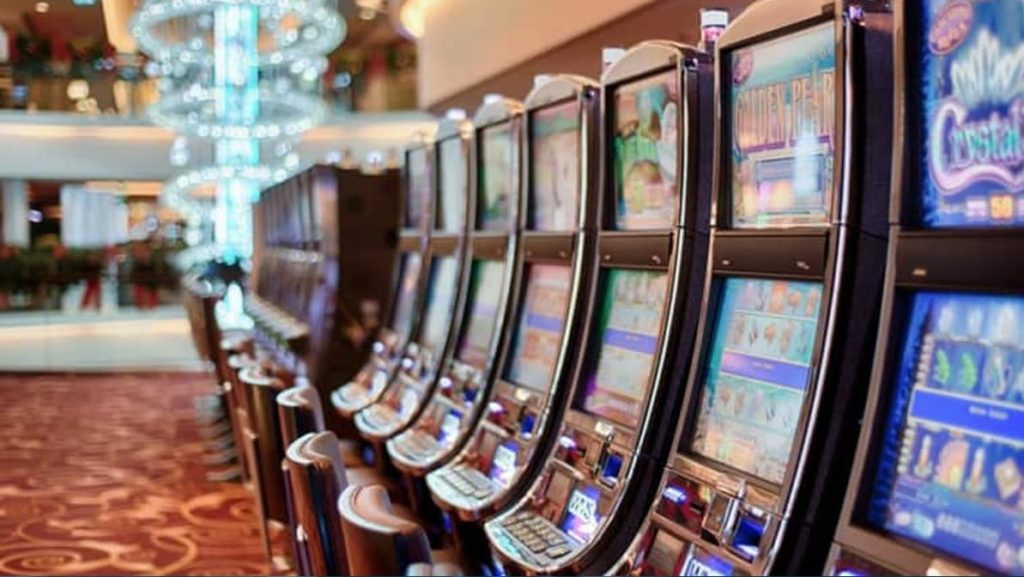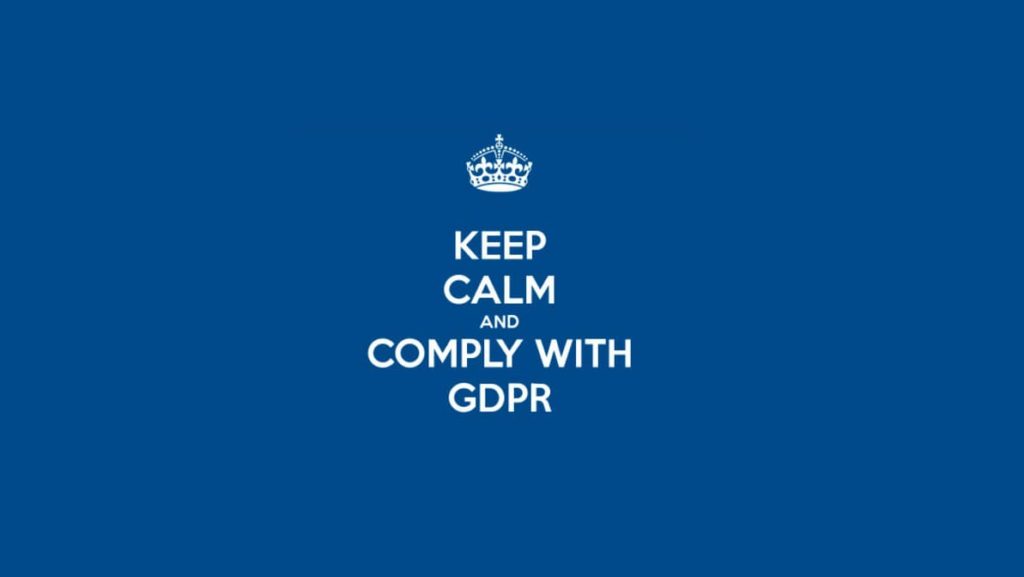The job of a security guard is more than just navigating checkpoints as they perform their tours or post orders. More is required of our front-line security teams — more than paper-based methods can cover.
Supervisors must monitor remote teams on-the-go while also managing the back-end of your operations. Tools that offer GPS tracking capabilities for real-time visibility and self-guided reporting capabilities for incident and activity reports are essential to operational success.
So what role does guard tracking software play in the physical security game?
In this article, we’ll discuss the purpose of a guard tour system and guard activity management in physical security operations, why it’s important to evaluate operational needs, how a system works with your team, with tips to safely monitor your security guards.
What is security guard tracking software?
Security guard tracking software helps security professionals digitally manage and track all physical security activities in real-time. Activities can range from organizing guard tours and checkpoints, real-time incident reporting, post orders, improved team communication, and more.
These insights typically assure their security guards are meeting contract requirements and hitting all checkpoints. As a bonus, guards become more accountable for their tasks, since it’s so easy for them to see what they have to do during shifts.
Do you need a security guard tracking system?
No matter the size of your physical security team, having guard tracking software is a must. Yet, not all tracking software is equal, which is why it’s important to know your team and company needs. Knowing your team and company needs will help you organize which guard activities need tracking, like guard tours, daily activity reporting, post orders.
Evaluating operational needs
Here are a few things to help you evaluate if you need a security guard tracking system for your team:
- Tour Status: You need to confirm a guard is checking off their checkpoints without having them call every hour
- Checkpoint Health: You need to know if there’s a malfunction with an NFC tag checkpoint ASAP
- Supervisor Bandwidth: Your supervisors don’t have the manpower to drive from site to site to check on solitary guards during shifts
- Different Locations: Your team manages different locations each with different needs, like remote areas, crowded events, parking structures, and more
- Critical Incidents: During an incident, your supervisor needs to see what’s going on as it’s happening, without delay
- Reporting: You need reliable incident reporting that’s fool-proof and can hold up against litigation, if necessary
- Client Satisfaction: You need to satisfy client demands with transparent and regular updates on their property
Evaluating operational needs is one step in knowing if your team can benefit from this system. Yet, using guard touring systems is only as good as understanding how it works.
How do guard touring systems work?
After determining if a guard touring system is required for your team and company, it’s important to know how it really works. Depending on the system, solutions can vary from being simple, out-of-the-box options, which is best for small to medium sized teams, to more comprehensive and flexible options, which are perfect for the larger, growing team.
When security companies track their guards with a security guard tracking system, they’ll access critical insights needed to easily manage guard tours, checkpoint completion, geolocation information, and their team from a remote location. It solves that need for visibility and makes managing your security team much easier.
Easily managing your security team translates to 5 essential features
- Real-Time Incident and Activity Reporting
- Guard Tour Tracking
- Cloud Based System
- Command Center (GSOC)
- Real-Time Notifications
Real-Time Incident and Activity Reporting
Real-time incident and daily activity reporting means that any report can be done digitally with immediate access once submitted. This enhances reporting quality, accountability, and prevents miscommunication. When digital reports are submitted, supervisors can immediately access the report, and can properly respond as needed. This is what makes incident and activity reporting “real-time”.
While having real-time reporting is important across all industries, having digital reporting is perfect for teams working in fast-paced, people-oriented industries, like event security, hospitality security, higher education security, or even healthcare facilities.
Guard Tour Monitoring
A guard monitoring system monitors your team’s whereabouts by tracking their activities and location in real-time. All live tracking information is then uploaded to a command center or a supervisor’s computer where they can see their team’s movements as it’s happening.
Safe monitoring technology has made it easy for supervisors to watch guard activity without violating a guards’ privacy. It helps ensure guard safety when securing remote facilities and helps supervisors gain full visibility on their team’s activities. These can include: normal front-line activities or incidents, tour progress — when they’re active, complete, or if any checkpoints have been missed, and historical tour data to prove that security guards are delivering on the contract requirements.
Cloud-Based System
A cloud-based system is a solution set that’s accessible online with an internet connection. Cloud based technology allows users to access guard management software from any location at any time. This means security company owners can see if their guards are performing as expected even when they’re traveling to another site.
When an internet connection is unavailable, an “offline mode” automatically takes over, ensuring that all information is uploaded once systems are back online. This helpful for loss of internet or working in a location, like a basement that doesn’t have connection.
Command Center (GSOC)
The command center allows supervisors to manage all aspects of the guard tour management system including:
- Monitor security operations across multiple client sites
- Respond quickly to security or safety threats with dispatch
- Analyze historical data to mitigate risks
- Quickly communicate with your team via push-to-talk, push notifications, and group messaging
- Real-time alerts sent to supervisors on incidents, lone worker alerts, or missed shifts
Real-Time Notifications
Real-time notifications provide visibility into all incidents and guard activities. Supervisors can receive notifications, or alerts, on guard activities as they happen, allowing for stronger situational awareness across all sites.
A popular real-time notification feature includes mobile push notifications. Mobile push notifications are instant alerts sent directly to a guards’ mobile device through the security guard tracking system. This is a great feature to help with team communications, especially during an incident or when tracking a lone worker.
Tips to safely monitor your security guards
Monitoring your team comes with challenges. The positive thing is that it doesn’t have to be difficult. When safely monitoring your security guards, it’s up to the supervisor to ensure all guards are safe, performing their tasks as expected, and are held accountable.
Here are 4 “Es” that can help ensure your security team is operating efficiently.
Enable Guards to Gain Accountability
Accountability starts at the top. When managers provide their team with the tools needed to complete their tours team morale and communication improve.
Guard tour systems enable guards on the field to efficiently perform their tasks with features like reviewing time, attendance, and post assignments all from one place. Not only does this help with managing security guards effectively, but it also enables supervisors to plan schedules and map out tours more accurately.
Exercise Ease of Use
Since technology is changing so quickly, having tools that allow for cost saving solutions is a must. One of those cost saving points involves company mobile devices. Purchasing high to mid-grade mobile devices, like tablets or smartphones, that will last long can be expensive.
A BYOD (Bring Your Own Device) policy can cut costs and provide guards with the peace-of-mind of not having to learn how to use a new mobile device or operating system.
Ensure Guard Safety
If your team is ever in a solitary situation that can put them in danger, having immediate protection when they need it is critical.
Lone worker protection ensures guard safety by providing instant notification whenever a guard is in danger. Typically, features of lone worker protection can range from manual panic alarms, phone tilt technology, or a danger zone timer.
Equip Guards with Communication Tools
Quick response time to threats or incidents can be a matter of life or death. Safely monitoring guard reporting can be as simple as using self-guided report prompts.
Self-guided prompts ensure guards maintain accountability for their tour activities and responses. It also ensures response time is quicker and more efficient, since digital reports allow for guards to attach critical evidence, like images, notes, videos, or voice memos.
Don’t Get Caught Off Guard
While a guard tracking system can be used by any industry, having a system benefits the entire operation and every detail in-between. For companies that contract to cover events, corporate, private business, a system has helped to:
- Intuitively monitor your officers across multiple locations
- Receive notification alerts if a guard tour is not carried out
- Ensure officers perform their tasks efficiently
The best part? Having real-time team connection is only the beginning of what a comprehensive security guard tour app can provide. Guard visibility and protection along the tour almost always guarantees better tour outcomes, reporting, and overall team safety.
To learn more about the security guard tour app request a demo to see it in action.



